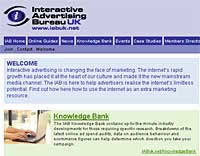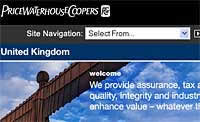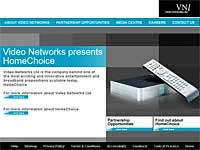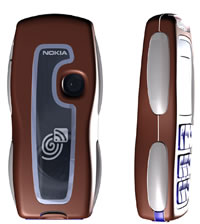 Cappuccino-supping Hoxtonites will be cheered by new figures showing that online advertising spending grew by a thumping 60% in 2004, edging ahead of radio in terms of market share for the first time.
Cappuccino-supping Hoxtonites will be cheered by new figures showing that online advertising spending grew by a thumping 60% in 2004, edging ahead of radio in terms of market share for the first time.
The report, from the Interactive Advertising Bureau and PriceWaterhouseCoopers, declared 2004 to be “a coming of age year” for online ad expenditure.
The amount spent on the Internet sector in 2004 topped £653.3m (US$224.8m/€953.6m), an increase of 60% on 2003 (£407.8m), with new spending driven by increased broadband availability, consumer confidence and creative marketing campaigns.
The new figures push the sector’s annual market share to 3.9% for the year (up from 2.6% in 2003), overtaking radio’s 3.8% share for 2004.
The Internet sector looks to record further gains, with spending for the second half of last year reaching a record-setting figure of £373.9m (US$701m/€545.8) representing a 4.3% half-year market share.
The press remained the top dog of advertising spending, claiming a 41.5% market share for the year, ahead of TV (23.9%), direct mail (14.6%), directories (6.4%), outdoor (5.0%) and cinema (0.9%).
 Online spending went against the overall general advertising trend, with total UK spend rising just 5.8% in 2004 to £16.9bn (US$31.7bn/€24.7bn) in 2004, based on figures from the Advertising Association and WARC.
Online spending went against the overall general advertising trend, with total UK spend rising just 5.8% in 2004 to £16.9bn (US$31.7bn/€24.7bn) in 2004, based on figures from the Advertising Association and WARC.
Guy Phillipson, chief executive of the IAB, said: “There’s a massive cultural shift going on, forcing a change in consumer and advertiser behaviour. The triple crown of cheap broadband, cheaper technology and ever more compelling content is driving consumers to the Internet and pulling advertisers online.”
The report went on to assert that the online industry is now ahead of its targets to overtake the market size of Outdoor advertising by November 2007, adding that online ad revenues are now more than four times bigger than they were at the height of the dotcom boom in 2000.
“The audiences are there – more marketers need to wake up to the brand building and direct sale benefits of the Internet as a maturing medium.” enthused Phillipson.
 The London Underground is to show digital advertising on its escalators for the first time, as part of a trial being handled by Viacom Outdoor.
The London Underground is to show digital advertising on its escalators for the first time, as part of a trial being handled by Viacom Outdoor. The trial is due to start within months, and if successful will be rolled out at other locations across the network.
The trial is due to start within months, and if successful will be rolled out at other locations across the network. Virgin Radio is making highlights of its breakfast show available for digital audio players like the iPod, in what it claims is a first for “podcasting”.
Virgin Radio is making highlights of its breakfast show available for digital audio players like the iPod, in what it claims is a first for “podcasting”. The BBC has already been experimenting with the new audio distribution model, introducing weekly podcasts of Five Live’s weekly sports quiz Fighting Talk after a successful trial using Melvyn Bragg’s ‘In Our Time’ series on Radio 4, downloaded by more than 70,000 users.
The BBC has already been experimenting with the new audio distribution model, introducing weekly podcasts of Five Live’s weekly sports quiz Fighting Talk after a successful trial using Melvyn Bragg’s ‘In Our Time’ series on Radio 4, downloaded by more than 70,000 users. Although the format is already creating a few podcasting stars, it has to be said that most of the thousands of personal radio broadcasts currently available to download are home-made, rough-edged, and, frankly, pretty crap.
Although the format is already creating a few podcasting stars, it has to be said that most of the thousands of personal radio broadcasts currently available to download are home-made, rough-edged, and, frankly, pretty crap. Video Networks Ltd (VNL) has announced a range of enhancements to the TV functionality of its HomeChoice service, claimed to improve the overall customer experience.
Video Networks Ltd (VNL) has announced a range of enhancements to the TV functionality of its HomeChoice service, claimed to improve the overall customer experience. Nokia has lifted the lid on the world’s first NFC (Near Field Communication) equipped mobile phone by adding the special NFC clip-on shell to their 3220, a tri-band camera phone that is available in two versions (Euro/Asia & America). With its build-in NFC shell, the phone is the latest step in the development of innovative products for mobile communications.
Nokia has lifted the lid on the world’s first NFC (Near Field Communication) equipped mobile phone by adding the special NFC clip-on shell to their 3220, a tri-band camera phone that is available in two versions (Euro/Asia & America). With its build-in NFC shell, the phone is the latest step in the development of innovative products for mobile communications.